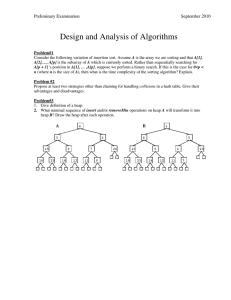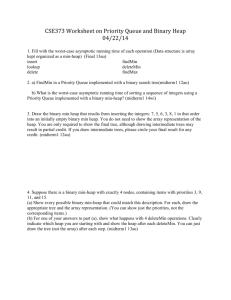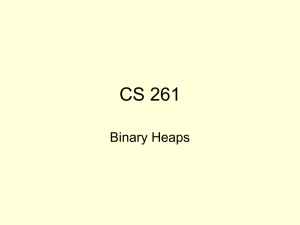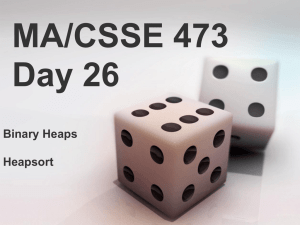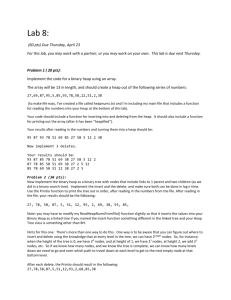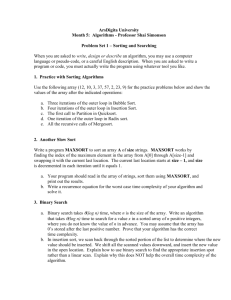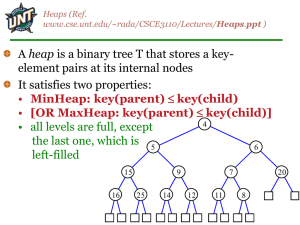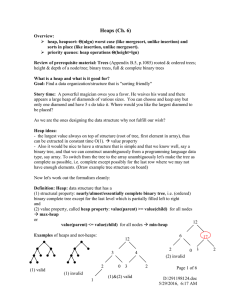CSE 250 September 29 – October 3, 2008
advertisement
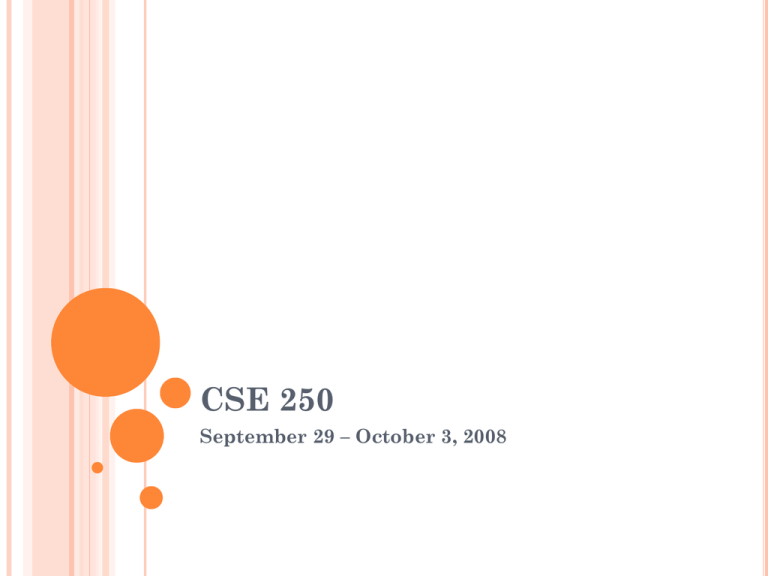
CSE 250 September 29 – October 3, 2008 ANNOUNCEMENTS Homework 4 due 10/5 Project 1 posted for 10/6 Exam 2 10/8 No classes meet 10/9 Project 1 due 10/26 HEAPS / PRIORITY QUEUES Heaps store elements so that the “next” element to be deleted is at the root. Typically, the “next” is either the minimum element or the maximum element, so we refer to a min heap or a max heap, but they are fundamentally similar HEAP PROPERTIES Heap order property For every node x, the key in the parent of x is smaller than (or equal to) the key in x. For all heap operations this must be maintained. Given that property, we can see that a heap is some sort of tree. Our first heap will be a binary heap, so it will be a binary tree that is complete. That is every level of the tree is filled (has all nodes possible) from left to right. Only when one level is full can nodes at a new level be inserted. POSSIBLE IMPLEMENTATIONS (NAÏVE) Linked list Insert at end (simple and efficient) When deleting, find minimum element and delete (simple but O(n) ) Furthermore, we really thought it should be a tree Binary Search Tree Insert and find min and delete would be O(log n) assuming a balanced tree We know that we really can’t safely assume balance HEAP IMPLEMENTATION (BETTER IDEA) Use a simple binary tree actually stored on an array (the fact that is complete makes this easy to do and not prone to “empty” spots in the array). When implementing a tree on an array, we remember the following: Root is stored at index 1 For the ith element: The left child of i is at 2i The right child of i is at 2i + 1 The parent of i is at floor(i/2) HEAP OPERATIONS Insert: First put element in next available leaf spot. Then, go up the heap from that point, swapping child with parent if the parent is greater than the child. Delete: (always root) Put right-most leaf in last level at the root, then walk down the heap, swapping the node at the root with the smaller of the two children. HEAP CODE We created some perhaps not totally correct C++ code for the heap implementation that is stored with the rest of the code in /projects/CSE250/Fall2008 HUFFMAN TREES Encoding of data for compression Creates a prefix code Uses character/frequency records to create a tree Tree is used for encoding and decoding the files ALGORITHM Start with a list of character-frequency pairs sorted in ascending order Take the first two elements in this list and form a tree where the frequency stored at the root of this new tree is the sum of the frequencies of its two subtrees Insert this new tree in proper place in list mentioned above Repeat taking elements two at a time until the tree is completely formed.
